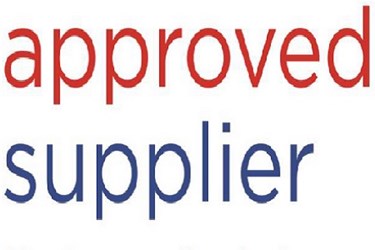HACCP: Updating Your Approved Supplier List Is A Must
By Laurel Maloy, contributing writer, Food Online

As FSMA’s implementation draws closer, paperwork is proving to be a monumental challenge for food processors. Updating approved suppliers and improving upon current procedures can help trim the workload.
It’s week 3 of the Hazard Analysis and Critical Control Points (HACCP) Challenge issued by the HACCP Mentor, Amanda Evans. This fun challenge forum is a platform on which to elevate your company’s level of compliance with HACCP standards. This particular challenge offers a timely, strategic, and competitive manner in which to approach your HACCP responsibilities, namely your Approved Supplier list and certifications. Supplier approval and documentation is one of the Top 10 Food-Safety Inspection Issues. Evans, a food safety compliance auditor, is more than qualified to provide assistance and advice in this area.
The challenge this week is to check your approved suppliers for up to date HACCP certification. Almost all Global Food Safety Initiative (GFSI) standards will require that suppliers be approved. The GFSI essentially provides benchmarks against which food-safety experts measure a facility’s food-safety operations. In fact, some businesses in the food supply chain will not even do business with a supplier that is not certified against GFSI standards. It is a good practice to adhere to if your facility is not already doing so.
GFSI has recognized a number of schemes through which third-party certifications may be obtained, these schemes meeting the requirements documented within the GFSI Guidance Document. With the implementation of the Food Safety Modernization Act (FSMA), having GFSI-based supplier certifications in place will be essential. Be sure when checking your approved suppliers that they have a current, unexpired HACCP certificate, preferably from one of the following GFSI-approved third-party certification programs:
- BRC Global Standard for Food Safety
- Canadian Horticultural Council On-Farm Food Safety Program (CanadaGAP)
- Dutch HACCP
- Food Safety System Certification (FSSC) 22000
- Global Aquaculture Alliance Seafood Processing Standard (GAA)
- Global G.A.P.
- Global Red Meat Standard (GRMS)
- International Featured Standards (IFS Food)
- Primus GFS
- Safe Quality Food (SQF)
- Synergy 22000
These certification programs are presented alphabetically. Your suppliers will have chosen the HACCP certification program most-closely associated with, or most-highly recognized for their particular category of goods.
Also, don’t let confusion over terminology set you on the wrong course. For example, the words “accreditation” and “certification” are often interchanged, though incorrectly. A complete glossary of terms can be found here. It is important to be aware; it can prevent your company from spending unnecessary monies and wasting valuable time. You’ve heard the saying, “A little knowledge is a dangerous thing.” Indeed, in certain instances, it can be. Having a well-educated and food-safety-savvy staff goes a long way toward alleviating the stress and potential for failure associated with inspections and audits.
To get started on the HACCP Challenge, print off a copy of your Approved Supplier List. If you are still maintaining your supplier list in that Rolodex that’s about to fall apart, now is the time to step into century 21. Create a document (in Word, Excel, or another program), organizing it by type of supplier, such as raw meats, grains, spices, cleaning supplies etc. Then, alphabetize the suppliers under each category and create columns with the applicable dates, such as the last review date, the issue date, and the expiration date. In addition, for each supplier on your list, you should have a hard and/or digitized copy of its HACCP certificate. It may save time to check the approved supplier’s website for proof of certification. Some will have it available for download for instant receipt, rather than having to request it and wait for its arrival by email or snail mail.
Keeping hard copies on file is pretty much a procedural choice; however, consider who may need access to that list at any specific time. Plan for contingencies and ensure the persons who may need access have it. Who hasn’t had a supplier fall through and have had to resort to the back-up plan? Any break in production can cost your company a lot, and not just monetarily.
Expiration dates can be set up to change color on excel spread sheets or set up in a Google calendar so that an alert is provided when a certificate is about to expire. Evans has provided a short tutorial video on how to set up color-coded alerts for Approved Supplier Certificates.
As always you can join the discussion by going to the HACCP Challenge Page associated with a specific challenge. You can offer your own advice, share your experiences, or get even more suggestions for maintaining these records from your peers within the industry.
